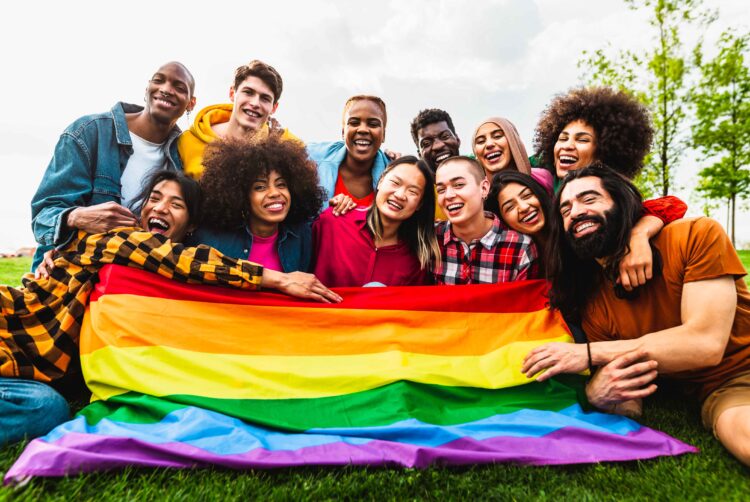Most spend for LGBTQ+ happens during Pride. We can do more

Opinion
How can we interrogate our media planning and buying to embed DEI principles into campaigns all year round?
June marks the month of Pride and when it comes to authentic representation, we’re seeing promising progress in terms of the narratives and diversity of talent that are being centered within advertising.
However, it is estimated that 70% of all media spend for the LGBTQ+ community is invested at this cultural moment, which runs the risk of tokenism. This trend is not unique to this audience and we see similar patterns of limited spend across other minority groups.
So how can we all take greater responsibility and interrogate our media planning and buying to embed DEI principles into your campaigns all year round?
Here are three questions we should be asking of ourselves:
1. Do your campaign briefs only consider diverse audiences around a cultural calendar?
With each generation the UK population becomes more diverse. Just over half (54%) of Gen Z are not exclusively heterosexual (Ipsos, 2020) and one in five are from Black, Asian, or mixed ethnicities (ONS, 2011). For media plans to effectively reach, drive relevance and convert your audience, you must reflect the diversity of the UK population within your growth audiences, insights, and media activations.
If the key time that diverse audiences are consciously considered within the campaign brief is calendar moments such as Pride, Ramadan, or Black History Month, this ignores diverse audiences throughout the rest of the year and risks being tokenistic.
It is timely to consider Pride right now, but do you consciously speak to your LGBTQ+ audiences outside of Pride, particularly when 84% of the LGBTQ+ audience are calling for it? (Kamarama and Gay Times, 2020)
How to support change: Consciously ask for diverse audiences to be reflected within all campaigns, just not cultural moments. Diversify your media supply chain to be more inclusive. Consciously interrogate your brand safety measures and identify whether your exclusion lists are inadvertently blocking diverse publishers. Reflect on the intersectionality of identities represented within your influencer plans.
2. Are diverse voices centred throughout the campaign development process?
Our industry is not yet as diverse as it should be. Ibrahim Kamara, co-founder of GUAP, recently highlighted this:
“What we see is that in front of the camera the talent is diverse, but behind the scenes you have one set of diversity,”
We need to have the right people in the room and be conscious in campaign development that diverse voices are heard and acted on. Important touchpoints for this include audience insights, media partners and publishers, influencers and more. When driving inclusion and authentic representation, the micro decisions happening day-to-day are as important as setting the DEI vision in the first place.
At MediaCom, we aim to diversify decision making in two ways – first by working with Cultural Consultants and Future Creatives, our network of individuals and collectives outside our agency who guide campaigns speaking to communities we want to reach. Secondly, we work with our Inclusive Planning Network, media specialists who apply their technical knowledge to drive systemic change within the business. We work hard to centre marginalised voices within our network to ensure that lived experience of diversity is heard and acted on.
How to support change: Are people who bring lived experience of the specific audiences you are representing and connecting with involved within these decisions? Making campaigns more inclusive and authentically representative is as much about the big vision as the micro decisions that happen on a day-to-day basis.
3. Is inclusion built into your business behaviours?
Communications alone cannot carry the responsibility for driving inclusion across a brand. Does the business demonstrate DEI both within your own organisation and in behaviours within your wider community? It is essential that comms are not used for purpose washing or so called ‘woke washing’.
Understanding the value exchange and leaving a legacy is a powerful way to drive positive impact. Our work with Reebok led to paid internships for emerging creatives and allowed new wave media companies like GUAP to build mutually beneficial relationships within campaigns.
In doing this work, be intentional with your allyship. Create spaces of belonging where your teams, particularly marginalised people, feel supported to challenge campaigns that are not authentically representative.
How to support change: consciously reflect on whether your business is driving tangible social impact beyond just communications. Create policies, spaces and ways of working for your teams to truly feel a sense of belonging and feel empowered and safe to guide authentic representation.
Without doubt great progress has been made, but inclusive planning is essential for future growth. Every client and agency should be facing into these questions and taking responsibility into their own hands.
 Bonita Samuels is an account director at WPP media agency MediaCom.
Bonita Samuels is an account director at WPP media agency MediaCom.
Strategy Leaders: The Media Leader’s weekly bulletin with thought leadership, news and analysis dedicated to excellence in commercial media strategy.
Sign up for free to ensure you stay up to date every Tuesday.




